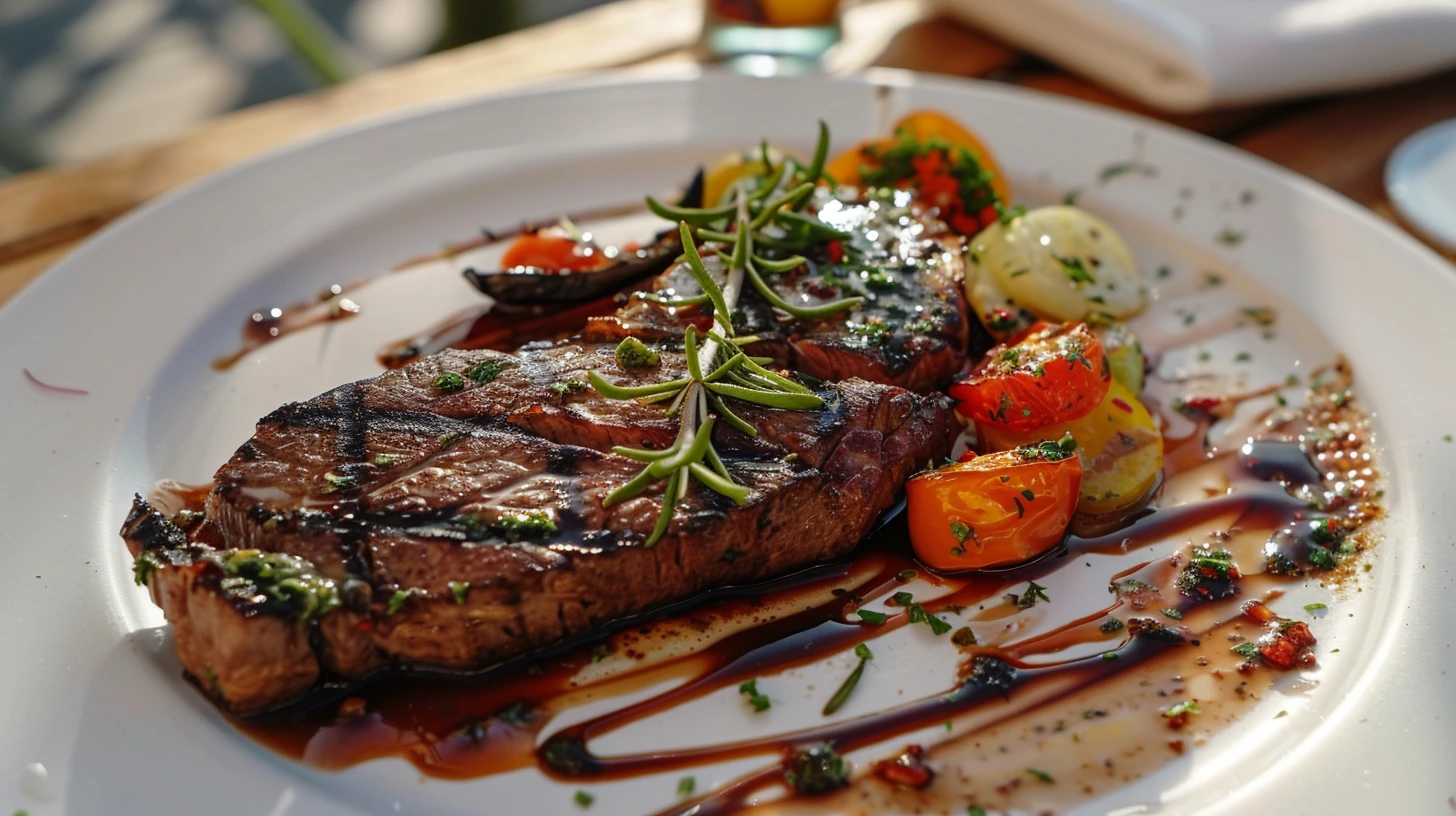Cooking the perfect medium rare steak is a skill that transforms a simple meal into a gourmet experience. Achieving the optimal internal temperature allows the steak to retain juiciness and tenderness, making it a favorite doneness level for many. Here’s a complete guide to mastering the medium rare steak temp, from choosing the cut to applying the best cooking techniques.
Why Medium Rare is the Ideal Temperature
Medium rare steaks, cooked to an internal temperature of 130°F to 135°F, offer a juicy, tender bite with a rich, pink center. The balance between tenderness and flavor makes it a top choice for steak enthusiasts. For those curious about different steak cuts, our in-depth guide to the Lamb Leg Steak explores preparation techniques that can apply to other steaks as well, providing insights for a perfect medium-rare result.
The Science Behind Medium Rare: Cooking for Flavor and Texture
The internal temperature of a medium-rare steak allows it to retain its natural juices while avoiding overcooking. This temperature range delivers a pink center with just the right texture and tenderness. For a more detailed approach to pan-searing or grilling, consider learning about the techniques highlighted in this Guide to Pan-Seared Steak for additional tips.
Step-by-Step Guide to Cooking a Medium-Rare Steak
Cooking a steak to medium rare is about timing, precision, and attention to detail. Here’s a breakdown of each step:
- Selecting Your Steak Cut
Choose cuts that shine when cooked to medium rare, such as ribeye, filet mignon, or sirloin. Thicker cuts are ideal as they handle high-heat cooking methods well. - Prepping Your Steak
- Bring the steak to room temperature for even cooking.
- Season with salt and pepper or marinate as desired to enhance flavor.
- Choosing the Right Cooking Method
- Grilling: Adds a smoky, charred flavor that pairs well with medium-rare doneness.
- Pan-Searing: Use a hot cast-iron skillet for a perfect crust.
- Sous Vide: Offers controlled, precise cooking, making it nearly foolproof for medium-rare.
- Cooking to the Ideal Temperature
Insert a thermometer into the thickest part of the steak, removing it from heat when it reaches 130°F to 135°F. For detailed advice on temperatures, see the ultimate guide to Steak Temperature. - Resting the Steak
Allow the steak to rest for about 5 minutes to let the juices redistribute, ensuring maximum flavor in every bite.
Cooking Techniques by Steak Cut
Each cut of steak may require a slightly different approach to reach the perfect medium rare:
- Ribeye: With its marbling, ribeye benefits from grilling or pan-searing to achieve a juicy interior.
- Filet Mignon: This thicker cut works well with sous vide or oven-finishing for an even cook.
- Sirloin: Great on the grill or in a skillet, with an intense beefy flavor that stands out at medium rare.
For an in-depth look at how to prepare a perfect ribeye, including additional cooking tips, visit our guide to the Ribeye Steak.
Common Mistakes to Avoid
Cooking a medium-rare steak requires attention to avoid common errors that can affect the final outcome:
- Overcooking: Timing is essential; pull the steak off heat as it reaches the target temperature.
- Skipping the Rest Period: Letting the steak rest preserves its juices.
- Underseasoning: Use ample seasoning to complement the steak’s natural flavor.
Essential Tools for the Perfect Medium-Rare Steak
These tools will help you achieve precise cooking results:
- Meat Thermometer: Ensures you reach the target temperature accurately.
- Cast Iron Skillet or Grill: Ideal for creating a flavorful crust.
- Tongs: For flipping without piercing, keeping the juices inside.
FAQs on Medium Rare Steak Temperature
- What temperature is medium rare for steak?
130°F to 135°F provides the pink, tender center that defines medium rare. - How long should I cook a medium-rare steak?
Timing depends on thickness and method, but typically around 4-5 minutes per side on a grill or skillet. - Is it safe to eat medium-rare steak?
Yes, as long as safe cooking practices are followed and a thermometer is used to reach the right temperature. - How can I check for medium rare without a thermometer?
Use the “touch test”; the steak should feel similar to the fleshy part below your thumb when pressed.
Conclusion
Achieving the perfect medium-rare steak is a combination of timing, technique, and a little bit of patience. By understanding your steak’s ideal temperature, selecting the right cut, and avoiding common pitfalls, you can cook a steak that is tender, juicy, and packed with flavor.

